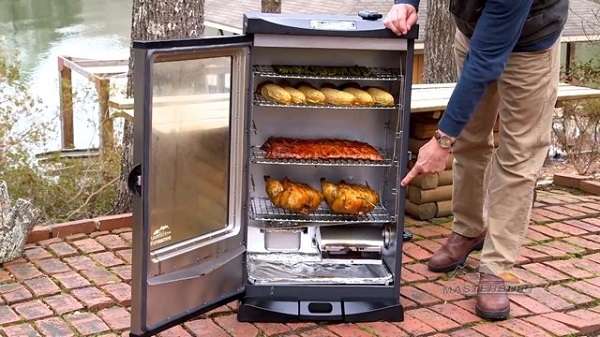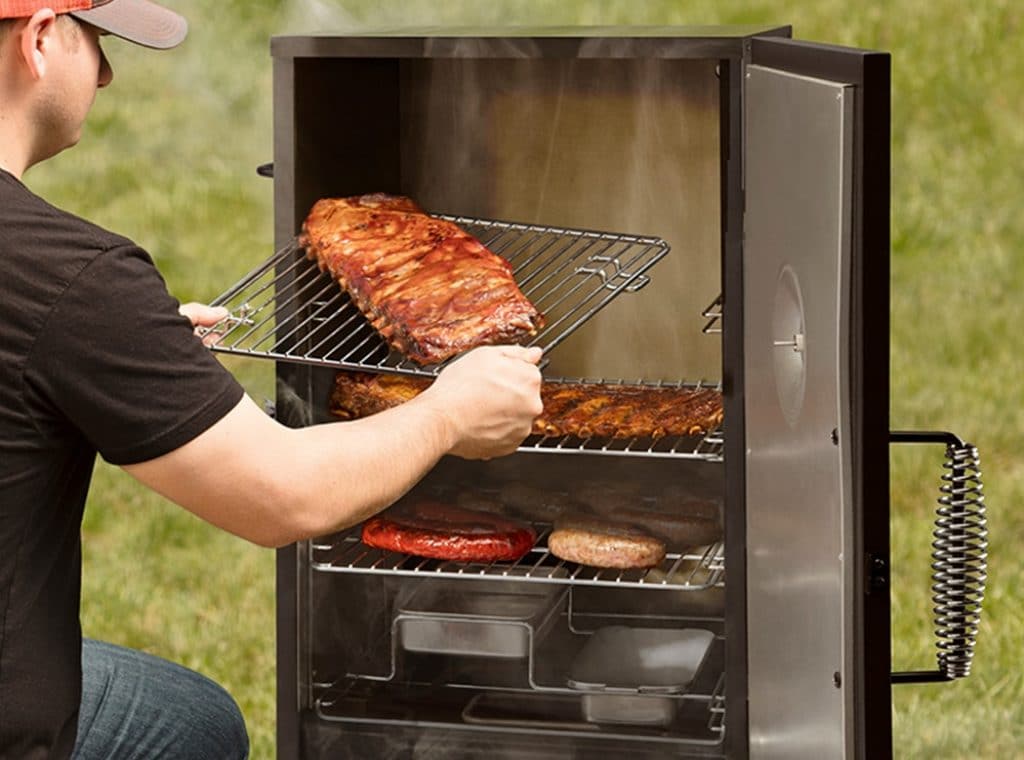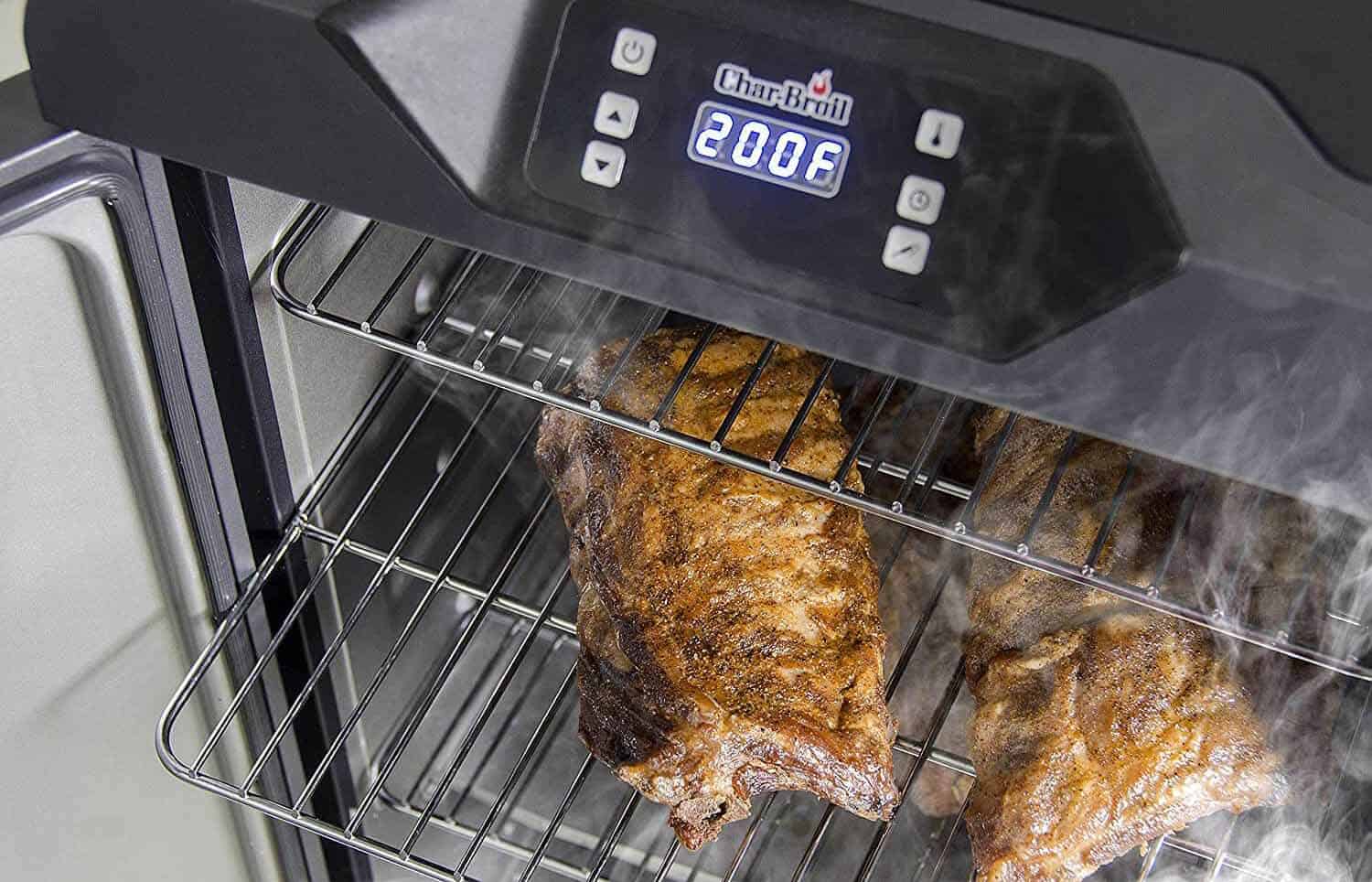How To Use Electric Smoker

Smoking food is a time-honored tradition, adding depth and flavor that's hard to beat. But traditional smokers, fueled by wood or charcoal, can be energy-intensive and require constant monitoring. Electric smokers offer a more convenient and energy-efficient alternative, especially when used strategically. This guide will walk you through how to maximize the energy efficiency of your electric smoker, saving you money while still creating delicious smoked dishes.
Understanding Electric Smokers and Energy Consumption
Electric smokers function by using an electric heating element to generate heat. This heat, in turn, cooks the food and vaporizes wood chips or pellets to produce smoke. Unlike traditional smokers, electric models offer precise temperature control, minimizing temperature fluctuations and reducing the need for constant adjustments. This precision directly translates to energy savings.
The energy consumption of an electric smoker varies depending on the model, size, and temperature settings. Most residential electric smokers consume between 800 and 1500 watts. For example, a 1200-watt smoker running for 6 hours at 225°F (a common smoking temperature) would use approximately 7.2 kWh of electricity (1.2 kW x 6 hours). To calculate the cost, multiply the kWh consumption by your local electricity rate. If your rate is $0.15 per kWh, that smoking session would cost $1.08. While this might seem minimal, frequent use can add up.
Key factors influencing energy consumption:
- Smoker size: Larger smokers require more energy to heat and maintain temperature.
- Insulation: Well-insulated smokers retain heat better, requiring less energy to maintain the desired temperature. Look for models with double-walled construction or insulated cabinets.
- Temperature settings: Lower smoking temperatures naturally consume less energy.
- Ambient temperature: Smoking in cold weather requires more energy to counteract heat loss.
- Door openings: Each time you open the smoker door, heat escapes, forcing the heating element to work harder to restore the temperature.
Optimizing Your Electric Smoker for Energy Efficiency
Here are several strategies to minimize energy consumption while using your electric smoker:
1. Preheating Efficiency
Preheating the smoker before adding food is essential. However, avoid excessive preheating. Once the smoker reaches the desired temperature, load the food promptly. Monitor the preheating time and temperature to avoid overshooting the target.
2. Maintaining a Consistent Temperature
Maintaining a stable temperature is crucial for both cooking and energy efficiency. Avoid frequent temperature adjustments. Utilize the smoker’s built-in thermostat and consider adding an external digital thermometer for accurate monitoring. Many newer models offer smart thermostat integration.
Smart Thermostat Integration: Some electric smokers can be integrated with smart thermostats and sensors. These devices can automatically adjust the smoker's temperature based on real-time conditions, optimizing energy usage. Look for models compatible with smart home ecosystems like Google Home or Amazon Alexa. This allows for remote monitoring and adjustments, preventing temperature fluctuations and wasted energy.
3. Insulation is Key
As mentioned earlier, insulation plays a significant role in energy efficiency. If your smoker lacks adequate insulation, consider adding an external insulating blanket or wrap. This can significantly reduce heat loss, particularly during cold weather. Consider using a welding blanket, specifically rated for high-temperature applications.
4. Minimize Door Openings
Resist the urge to constantly check on the food. Each time you open the door, heat escapes, forcing the smoker to expend more energy to recover. Use a meat thermometer with an external probe to monitor the internal temperature of the food without opening the door.
5. Strategic Wood Chip Management
Use wood chips sparingly. Overloading the smoker with wood chips can create excessive smoke, which may not improve the flavor and can waste energy. Follow the manufacturer's recommendations for the amount of wood chips to use and the frequency of refills. Some smokers use a wood chip tray, which can be more efficient than directly placing wood chips on the heating element. Using wood pellets instead of chips can also improve efficiency, as they burn more consistently and produce less ash.
6. Cook Larger Batches
Cooking larger batches of food at once is a more energy-efficient approach than multiple smaller smoking sessions. If you have the capacity, maximize the smoker's space to prepare enough food for multiple meals or to freeze for later consumption.
7. Clean Your Smoker Regularly
Regular cleaning improves efficiency. Accumulated grease and debris can interfere with heat distribution, forcing the heating element to work harder. Clean the smoker after each use, paying particular attention to the heating element and the drip pan.
8. Location, Location, Location
The location of your smoker matters. Avoid placing it in direct sunlight or windy areas. Sunlight can cause temperature fluctuations, while wind can accelerate heat loss. A sheltered location will help maintain a consistent temperature and reduce energy consumption.
9. Consider Off-Peak Hours
If your electricity provider offers time-of-use rates, consider smoking during off-peak hours, when electricity rates are lower. This can significantly reduce your energy costs, especially for longer smoking sessions. Many smart home systems can be programmed to automatically shift energy usage to off-peak hours.
Smart HVAC Integration and Energy-Efficient Smoker Placement
While seemingly unrelated, your home's HVAC system can indirectly impact your electric smoker's energy efficiency. If you're smoking indoors (which is generally not recommended due to the risk of carbon monoxide poisoning and lingering odors), ensure your ventilation system is adequate to remove smoke and prevent it from affecting your HVAC system's performance. Poor ventilation can force your HVAC system to work harder to filter the air, increasing energy consumption. Using your electric smoker in a well-ventilated area or outdoors minimizes this risk.
Furthermore, integrating your smart thermostat with your smoker (if supported) allows for a holistic approach to energy management. For instance, your smart thermostat can automatically adjust the HVAC system to compensate for any temperature fluctuations caused by the smoker, preventing unnecessary energy consumption.
Exploring Energy Efficiency Rebates and Incentives
While rebates specifically for electric smokers are uncommon, exploring general energy efficiency rebates offered by your local utility company or government agencies is worthwhile. Some rebates may apply to smart thermostats or other energy-saving devices that can be integrated with your smoker. Energy Star is a valuable resource for finding rebates and incentives in your area.
ROI and Long-Term Savings
Investing in an energy-efficient electric smoker, combined with the strategies outlined above, can result in significant long-term savings. While the initial cost of a well-insulated or smart smoker might be higher, the reduced energy consumption will pay for itself over time. Calculating the ROI (Return on Investment) involves considering the initial cost of the smoker, the estimated energy savings per year, and the lifespan of the appliance.
Example:
- Initial cost of energy-efficient smoker: $500
- Estimated annual energy savings: $50 (based on reduced wattage and optimized usage)
- Lifespan of smoker: 10 years
- Total energy savings over 10 years: $500
In this scenario, the energy-efficient smoker would pay for itself within 10 years, providing continued savings thereafter. Additionally, the convenience and precise temperature control offered by electric smokers can save time and effort, further enhancing the overall value proposition.
The Future of Electric Smokers: Sustainability and Innovation
The future of electric smokers is bright, with ongoing innovations focused on sustainability and energy efficiency. Expect to see advancements in insulation materials, heating element technology, and smart home integration. Manufacturers are also exploring the use of renewable energy sources, such as solar panels, to power electric smokers, further reducing their environmental impact.
By adopting these strategies, you can enjoy the delicious flavors of smoked food while minimizing your energy consumption and saving money. Embrace the convenience and efficiency of electric smoking, and contribute to a more sustainable future.
Disclaimer: Always refer to the manufacturer's instructions for your specific electric smoker model. Consult with a qualified HVAC professional for guidance on smart home integration and ventilation system optimization.










